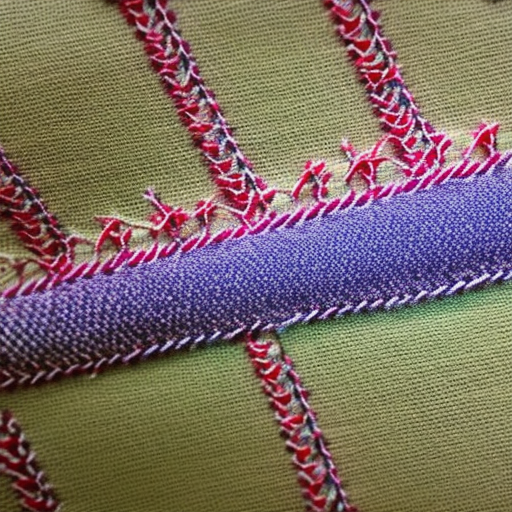When it comes to sewing, understanding different types of stitches is crucial to ensure successful and durable projects. Whether you’re a beginner or an experienced sewer, knowing the right stitch for the job can make all the difference. In this article, we will explore and explain some of the most common sewing stitches used in garment construction and other sewing projects. Let’s dive in!
Straight Stitch
The straight stitch is the most basic and commonly used sewing stitch. It is created by taking the needle up and down through the fabric in a straight line. Straight stitches are ideal for sewing seams and hems, as they provide strength and stability.
Zigzag Stitch
The zigzag stitch is versatile and widely used for various purposes. It goes from side to side, creating a zigzag pattern. Zigzag stitches are excellent for finishing raw fabric edges to prevent fraying. They also allow fabric to stretch, making them ideal for sewing knits and securing buttons.
Backstitch
The backstitch provides extra strength and prevents seams from unraveling. To create a backstitch, you sew backward for a few stitches before moving forward again. This stitch is commonly used for sewing seams in areas that endure a lot of stress, such as waistbands, zippers, and pockets.
Basting Stitch
A basting stitch is a temporary stitch used to hold fabric layers together before permanently sewing them. It uses long stitches, which are easily removed later. Basting stitches are helpful for fitting adjustments, gathering fabric, or creating pleats.
Overlock Stitch
An overlock stitch, also known as a serger stitch, is utilized to neaten and finish raw fabric edges simultaneously. It trims the edge of the fabric while encasing it with thread, preventing fraying. Overlock stitches are often seen on professionally finished garments or when working with knit fabrics.
Blind Hem Stitch
A blind hem stitch is designed to create an almost invisible hem on garments. It involves catching only a few threads on the garment’s right side, while most of the stitches are hidden in the fold of the hem. This stitch allows for a clean finished look with no visible stitching on the outside.
Conclusion
Mastering different sewing stitches expands your sewing repertoire and empowers you to tackle a wider range of projects. From the basic straight stitch to the invisible blind hem stitch, each type has its purpose and functionality. Take the time to practice and experiment with these stitches to gain confidence and enhance the quality of your sewing projects. Happy stitching!





Great info. Thanks for sharing!
Kara Jessop: Very helpful. Thank you for this post!
Nice comprehensive post! It’s wonderful to see the various sewing stitches explained in such a clear manner. Very helpful info for both beginners and more experienced sewers.